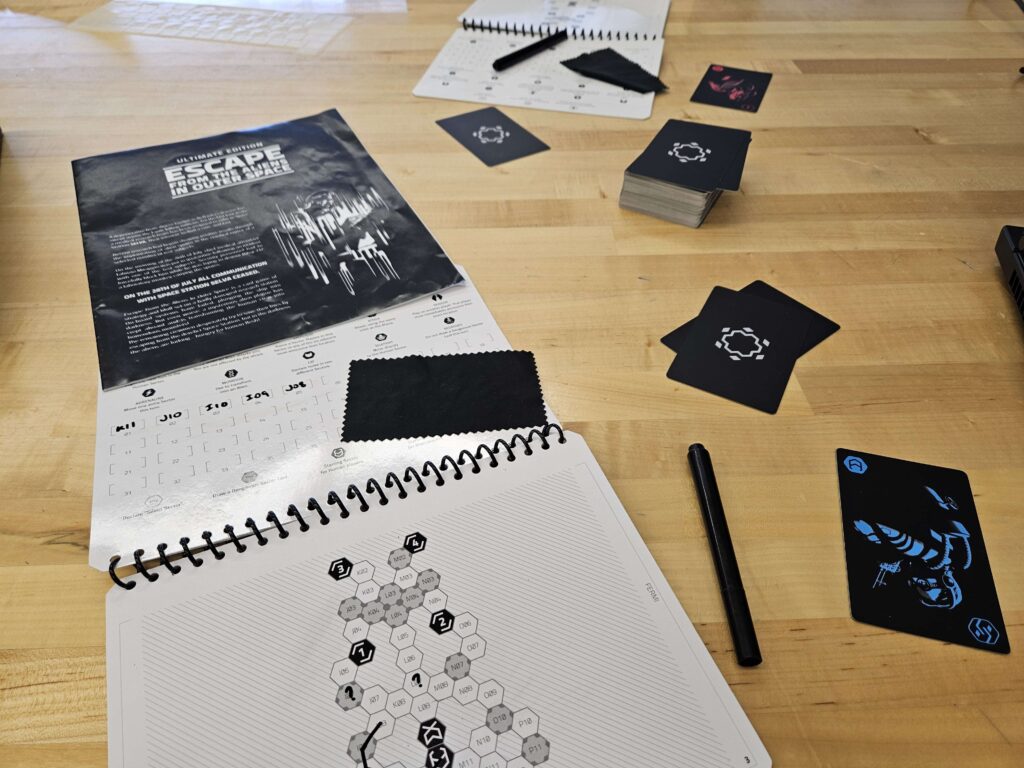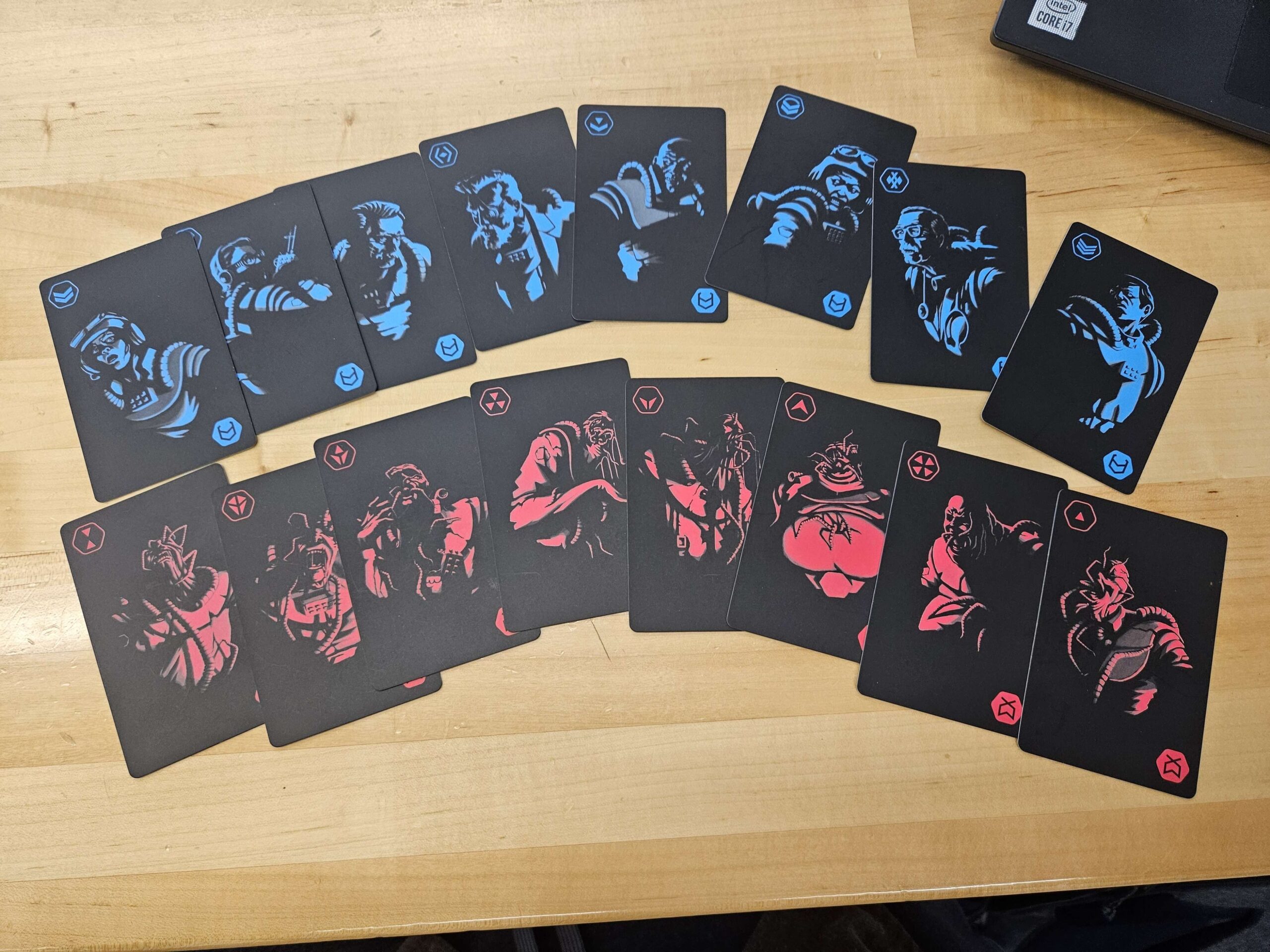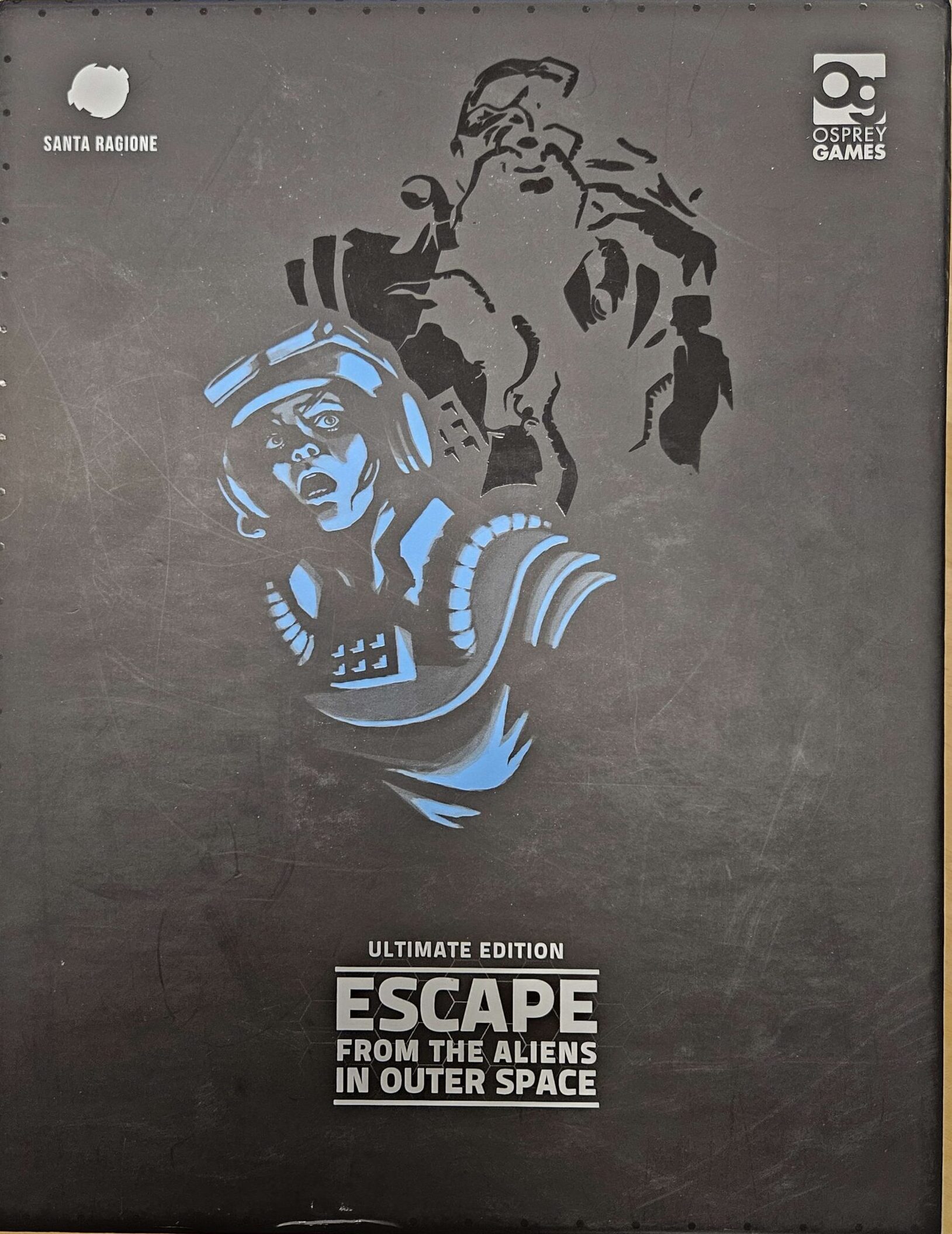Jamie Shiao
Escape From the Aliens in Outer Space: Ultimate Edition is a 3-8 player tabletop game with themes of strategy and social deduction where you either assume the role of human or alien. As a human your goal is to escape the aliens by reaching an Escape Pod, and as an alien your goal is to convert all the humans to aliens. The game is not exactly a card game or a board game, but it uses cards to determine what action occurs when you land on certain spaces on a whiteboard that you can mark on. The core gameplay loop is that each player chooses to move somewhere on the board until they land on a grey tile when they need to draw a card. That card will tell them if they receive an item, nothing, or a noise. There are 2 types of noises, one where you must announce your exact location and another where you may lie about where you are. Using these cards, humans must try to outluck or trick the aliens so they can escape.

I chose this game because Dylan and I developed a social deduction game as our tabletop game, so I playtested Escape with Tay to get a sense of how I would go about making a game similar to it. Although the game is listed as 3-8 players, it can work with 2 players as well. In our game, we knew the role of the other player from the start, but we didn’t know which specific character they had. For example, in our first round, I chose to be the human Co-Pilot, who can teleport once in the game without needing a teleport item card, while Tay chose to be the Blink Alien, who can use teleport item cards when usually only humans can. The game was still interesting and fun because the cards presented opportunities for the humans and aliens to interact to help the human stay alive.
My favorite parts of the game were the art style and the items. The art on the cards, boards, and box were all in a similar style to the iconic yellow cover of The Shining. It gave the whole game an eerie and unsettling feeling, making the game more tense. The items, on the other hand, could either help or hinder the humans depending on what card they got. My favorite item was the clone item, which gave your character a second chance to start from the beginning if you got attacked. My only criticism of the items is that if you play on a smaller map like Fermi without many grey tiles, you won’t receive many items and thus it makes it more difficult and luck-based for you to escape.

The game mechanics, or verbs, in this game include moving spaces (one for humans, one or more for aliens), drawing cards on grey tiles, playing cards, and attacking. Game elements, or nouns, include characters, items, and tile numbers on the board. These terms can all be recombined in different ways to make new and innovative games, so why did Escape choose their specific combination? As a strategy and social deduction game, this tabletop game hides information from players to make each action a verb AND noun a gamble. Is the player sure they want to move to this tile? Are they sure they want to attack with this item? The game invokes a powerful sense of doubt that players can take advantage of because withholding information allows players to lie or tell the truth. The ‘fun’ of the game is in the form of competition: the winning team of the game is determined by luck, but mostly by which team can effectively use information to their advantage. In our game design, we hoped to make every action seem like a risk as well, making Escape a great jumping point as inspiration for us.
